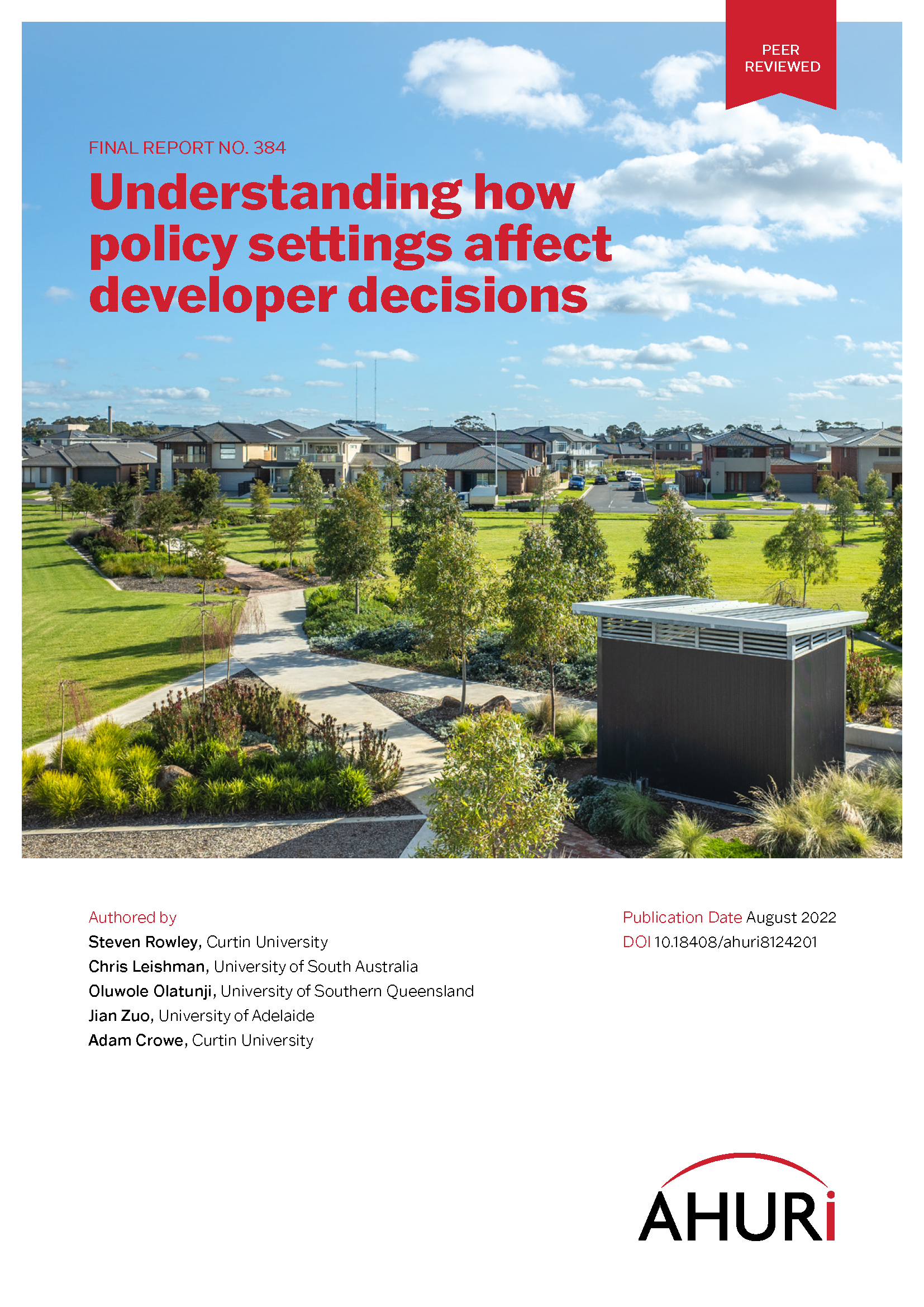
Government policies can help developers deliver new housing supply
24 Aug 2022
In order to sustainably stimulate housing supply government needs to understand how the development industry works according to new AHURI research. Private sector housing supply is driven by profit and factors that increase or decrease revenue and costs determine levels of new supply. The current combination of falling dwelling prices (in much of the country) and rising construction costs is the worst possible outcome for new housing supply.
The research, ‘Understanding how policy settings affect developer decisions’, undertaken for AHURI by researchers from Curtin University, University of South Australia, University of Southern Queensland and University of Adelaide, examines how policy settings and new construction technologies and processes affect developer decisions to provide private sector housing supply and might improve affordability.
‘We spoke to many developers and found the key to successful development was the ability to deliver the required rate of return while minimising risk’, says lead researcher Professor Steven Rowley, of Curtin University. ‘It’s not a case of maximising return at all costs; market demand, sales prices and sales rates were considered by many interviewees as the main risks.’
The most important input into a profitable development outcome is the end sales price. The research modelled how changes to key variables during a project’s development and construction affect developers’ financial returns and found that, in particular, small increases or reductions in final sales prices have major implications for profitability.
However, because development projects can take many years, forecasting the actual sales price on project completion is fraught with difficulty due to price fluctuations even in the short term, let alone on development projects which may span 10 years. As a consequence, developers usually adopt a conservative approach to price estimation.
While revenue is critical, cost increases and project delays also affect profitability. Small increases or reductions in construction costs have major implications for returns, as a 10 per cent increase in costs can mean a 40 per cent reduction in financial returns. Rising construction costs reduce development profitability and therefore housing supply.
The research modelling also found that planning and policy decisions can have an impact with significant reductions in the time taken from the commencement to completion of construction having a positive impact on feasibility. Even a one or two month reduction in a 24 month build time can mean the difference between a profitable and unprofitable development. New construction technologies and processes that reduce costs and shorten the development period have the potential to improve housing affordability.
‘To operate efficiently and deliver housing supply where it is most needed, the development industry needs a steady supply of sites that are financially viable to develop,’ says Professor Rowley. ‘This requires long term strategic thinking by all levels of government and a mechanism where investment in infrastructure is shared between government, landowners and developers.’
Policy makers need to understand that every site is different, and the impact of new policy settings will be determined by the characteristics and forecast profitability of the site, and also prevailing market conditions at point of sale. “Just because a site is zoned for residential use doesn’t mean it will automatically be built out, there are many other factors at play” said Professor Rowley.
Mandatory affordable housing contributions are the most likely source of large-scale affordable housing contributions in Australia as many development sites would be able to absorb the costs under a well-constructed and consistent policy. Carefully designed inclusionary zoning schemes, long lead in times and flexibility around site by site negotiations are essential. Government should recognise not all sites would be able to deliver such affordable housing contributions so a flexible approach is critical.
Lessons from the Covid-19 construction stimulus measures demonstrated policies to stimulate housing supply work best when they smooth out development activity over a long period to avoid capacity constraints. A stimulus scheme operating across the entire industry, rather than concentrating on detached homebuilding, is also more equitable.

